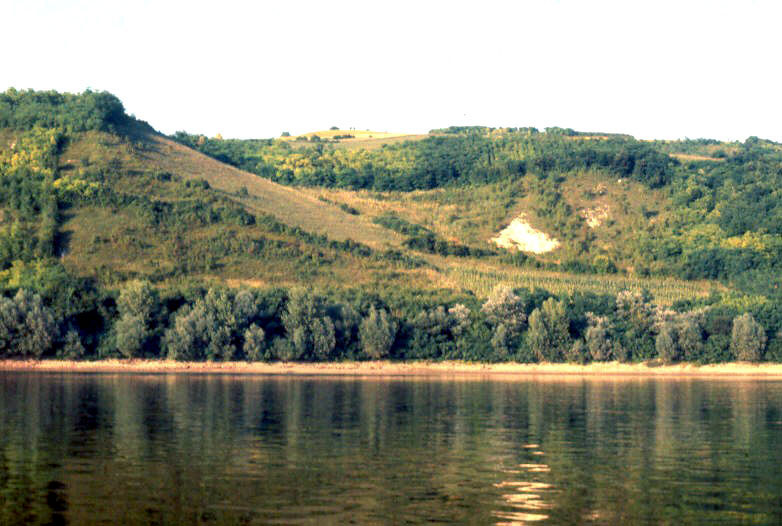Introduction
In the 1960's, Djuro Basler uncovered Paleolithic sites in Northern Bosnia. While surveying the uplands and river terraces between the Ukrina and the Bosna River Valleys (two southern tributaries of the Sava) he identified remnants of late Pleistocene loam deposits which contained layers of Paleolithic artifacts. The sixty some localities Basler was able to identified made it possible to construct Paleolithic maps of this vast region at the southern edge of the Central European Plain and the northern end of the Balkans.
Located on the south bank of the Sava River near its confluence with the Bosna River, Kadar is an open air, hilltop site. From there, the view extends over wide stretches of the Sava Valley and the surrounding uplands, an ideal lookout spot for Paleolithic hunters trying to follow the movements of bison and other large game herds.
Basler excavated a large section at the top of the hill uncovering , under the plow zone, a series of artifacts stratified in the upper layers of the loam deposits. The artifacts in place were abundant and left relatively undisturbed by plowing. The cultural affiliation of the site was not immediately recognized: the well made blade tools clearly belonged to a Late Paleolithic assemblage but a lack of diagnostic artifacts prevented a more specific designation. Large sections of the site were still in place after Basler's excavations .
So the site was selected when a joint project of the Museum of Sarajevo and the University of Kansas proposed to undertake a program of systematic excavations in Northern Bosnia. Two seasons were spent at the site in 1974 and 1976. After study, all recovered artifacts were deposited at the Zemalski Muzei in Sarajevo along with duplicates of the field notes. The original field notebooks, lab notes, and photographs are archived at the University of Kansas Laboratory of Archaeology (formerly the Museum of Anthropology). The site itself was unfortunately destroyed by road construction in the early 1980's.
The artifact assemblages recovered at Kadar belong to the Epigravettian with shouldered point best represented in Italy but also found along the eastern shores of the Adriatic, in Slovenia, and Croatia. Dated around 17 000 years ago, the Epigravettian correspond to a relatively mild climatic episode during which people were able to move back and forth across the Slovenian pass.
The Kadar excavations were the case study of an open air site where bones were not preserved but where the organization of stone artifacts and habitation features left by Paleolithic occupants were still recognizable in spite of some post-depositional disturbances.
The blade technology was adapted to the raw material : medium to large cobbles of radiolarite which were carried to the site after little or no preparation.
